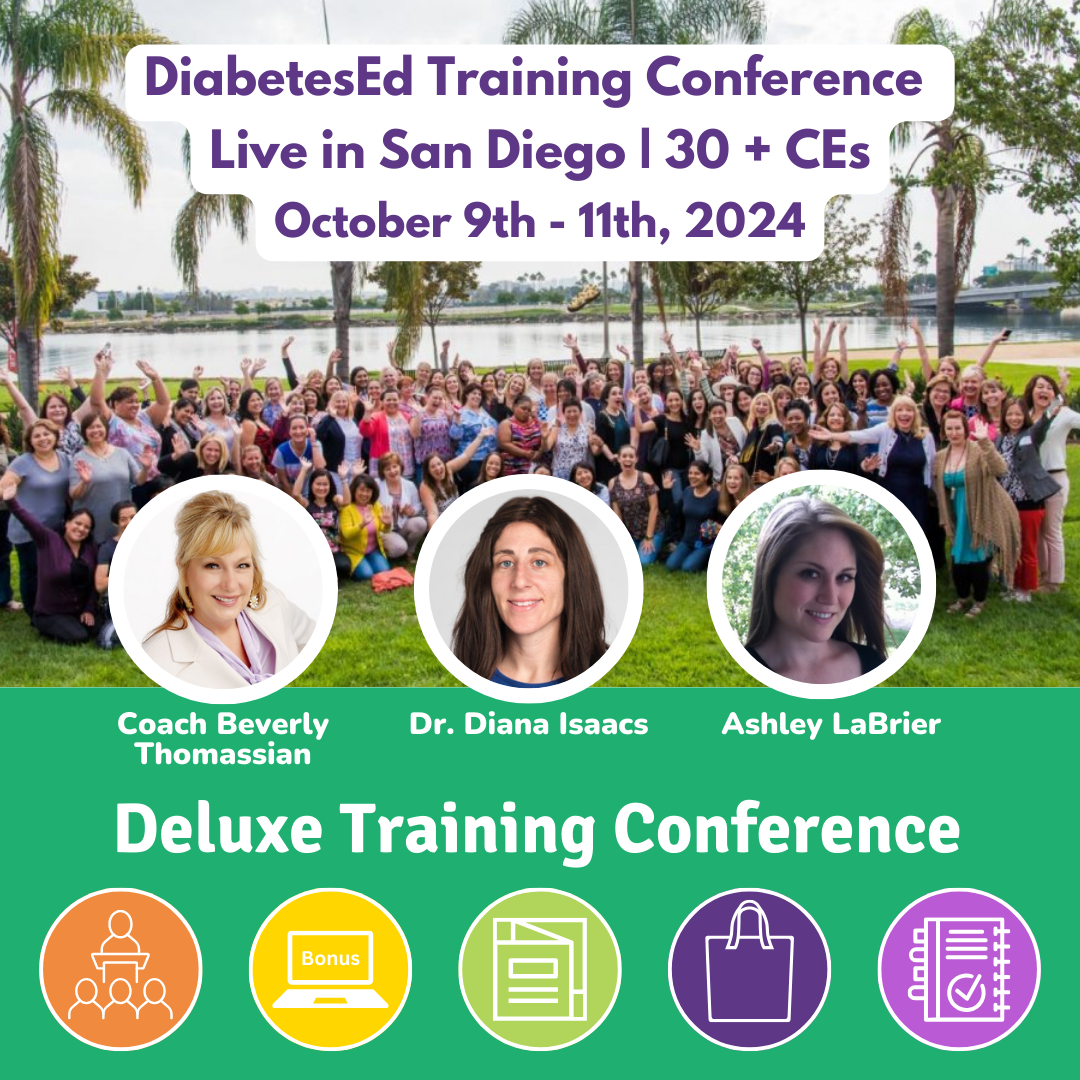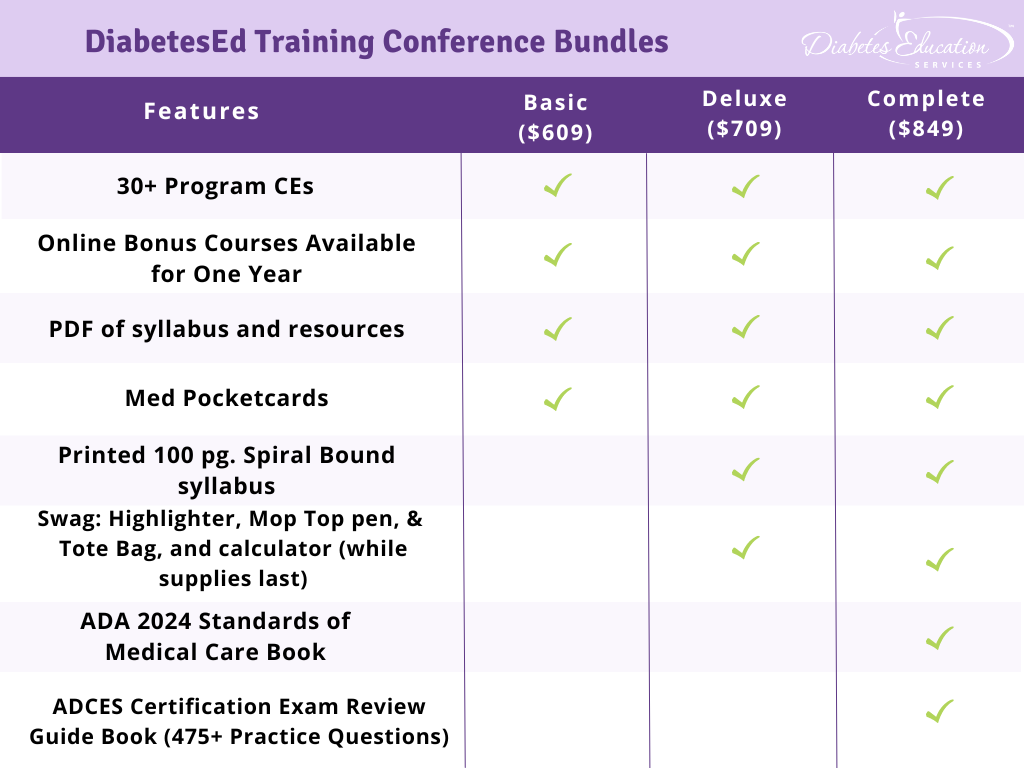
Summer, with its abundance of fresh produce and increased daylight hours, provides an opportunity to explore healthy eating and lifestyle habits. Collaborating with individuals to develop incremental, consistent, and lasting habit changes can prevent or delay diabetes progression.
This post will review three evidence-based opportunities that demonstrate how small changes can promote diabetes risk reduction.
The longer daylight hours of summer can be the perfect time to set goals for increased engagement in physical activities. Assessing baseline physical ability, current activity and daily movement, and sedentary time can prioritize action plans.
A little Activity Goes a Long Way
Guidelines recommend 150 minutes or more of aerobic activity, to improve A1C, reduce Cardiovascular Disease (CVD) risk, and improve overall well-being.
These guidelines, however, may impose an unnecessary barrier for those who could benefit from simply becoming more active.
The 2024 Standards Care1 reports adding 500 steps per day, a 5-6 minute brisk walk, or breaking up sitting time can reduce CVD mortality, increase life expectancy, and improve glucose metabolism, respectively. Effective interventions evaluate barriers and individualize action plans according to desires and needs.
Fruit & Veggies – Even a small increase improves outcomes
Evidence-based reviews have long shown that increasing fruit and vegetable consumption reduces the risk of diabetes and CVD. A BMJ observational study reported that every 66 grams per day increase in total fruit and vegetable intake was associated with a 25% lower risk of developing type 2 diabetes.5 This translates to less than ½ cup of vegetables (½ cup cooked broccoli, 3.5 spears of asparagus, or about 1.5 cup leafy greens) or less than one piece of fruit (½ apple, 1.5 apricots or ½ cup of strawberries).
Moderately increasing daily servings could help prevent type 2 diabetes, especially among populations with the lowest intake levels.
In creating a fruit or vegetable intake habit, the goal may be to explore access and the opportunity to include an additional vegetable or fruit serving daily.
Reducing Red & Processed Meats Decreases Diabetes Incidence
Summer barbeques can be associated with highly processed red meat consumption. Discussing the menu ahead of time allows time to explore alternative options.
In 2020, the US Dietary Guidelines Committee reported strong evidence that dietary patterns with higher intake of red and processed meats are associated with all-cause mortality and CVD risk. They also found with this dietary pattern moderate evidence of increased risk of type 2 diabetes and colorectal cancers.2
Within the US, current intake statistics report an average intake of 187 grams (~6.5 ounces) per week of processed meat and 284 grams (~ 10 ounces) per week of unprocessed red meat.2 A recent 2024 study using a microsimulation model of NHANES data estimated how changes in processed meat and unprocessed red meat intake could affect type 2 diabetes, CVD, colorectal cancer, and mortality.3
Their findings suggested that within the US, a 30% reduction in processed meat consumption could result in 352,900 occurrences of type 2 diabetes within the 10-year timeframe of the model, and a 30% reduction in both red meat and processed meat consumption could result in 1,073,400 fewer occurrences of type 2 diabetes.
Within the study, there was an 8.7-gram reduction in daily processed meat consumption, about 2 ounces per week. Findings from this model were similar to a 2021 observation study that found eating 150 grams (~ 5 ounces) or more of processed meat per week increased CVD risk by 46%.4 Although neither of these studies show true causation, action plans focusing on changes to portion, frequency, or type of food could promote diabetes risk reduction.
Share the Simple Summer Cucumber and Tomato Salad recipe below to inspire a delicious and simple option.
Habits are most often formed by consistently implementing small changes over time. Exploring an individual’s motivations, pairing goal setting with the highest change talk, and implementing motivating strategies for long-term behavior changes help habit formation. While every season can bring challenges and benefits, summer can be a mid-year point to reflect on daily habits. Whether the focus is on modifications to food intake patterns, daily activities, or problem-solving other situations, as healthcare professionals, we can help our clients achieve incremental changes that last.
 Simple Summer Cucumber and Tomato Salad6
Simple Summer Cucumber and Tomato Salad6
Ingredients
- 1/8 teaspoon black pepper
- 2 Tablespoons red wine vinegar
- 1 ½ Tablespoon olive oil
- 10 ½ ounces of cherry tomatoes, cut in half
- 1 large cucumber, peeled and cut into large chunks
- 1 pinch of salt (optional)
Directions
- Place the cut cucumber and cut cherry tomatoes in a salad bowl.
- In a small bowl, whisk together dressing ingredients.
- Pour the dressing over the cucumbers and tomatoes and serve.
Nutrition Facts
Servings: 4, Serving Size: 1 cup, Calories: 70, Total Fat: 5 gm, Saturated Fat: 0.7 gm, Sodium: 5 mg, Total Carbohydrate: 4 gm, Dietary Fiber: 1 gm, Total Sugars: 3 gm, Protein: 1 gm
References:
- American Diabetes Association Professional Practice Committee; 5. Facilitating Positive Health Behaviors and Well-being to Improve Health Outcomes: Standards of Care in Diabetes—2024. Diabetes Care 1 January 2024; 47 (Supplement_1): S77–S110.
- Frank SM, Taillie LS, Jaacks LM. How Americans eat red and processed meat: an analysis of the contribution of thirteen different food groups. Public Health Nutr. 2022 Feb 21;25(5):1-10.
- Kennedy J, Alexander P, Taillie LS, Jaacks LM. Estimated effects of reductions in processed meat consumption and unprocessed red meat consumption on occurrences of type 2 diabetes, cardiovascular disease, colorectal cancer, and mortality in the USA: a microsimulation study. Lancet Planet Health. 2024 Jul;8(7):e441-e451.
- Iqbal R, Dehghan M, Mente A, et al. Associations of unprocessed and processed meat intake with mortality and cardiovascular disease in 21 countries [Prospective Urban Rural Epidemiology (PURE) Study]: a prospective cohort study. Am J Clin Nutr. 2021;114(3):1049-1058.
- Ju-Sheng Zheng, et al. Association of plasma biomarkers of fruit and vegetable intake with incident type 2 diabetes: EPIC-InterAct case-cohort study in eight European countries. BMJ, 2020; m2194 DOI: 10.1136/bmj.m2194
- Downloaded from Diabetes Food Hub on July 18th, 2024. https://www.diabetesfoodhub.org/recipes/simple-summer-cucumber-and-tomato-salad.html?home-category_id=20
Join us Live in Beautiful San Diego for our
Annual DiabetesEd Training Conference
October 9th-11th, 2024

Join Coach Beverly and Team for two and a half days of knowledge-sharing, fun, networking, games with prizes, and “aha” moments in beautiful San Diego on October 9-11, 2024.
You don’t want to miss this one-of-a-kind learning opportunity. Get away from all those daily responsibilities and immerse yourself in a fun and intensive conference with plenty of networking opportunities.
Attendees will leave this conference with new tools and a more complete understanding of the latest advances in diabetes care, from medications to technology to Medical Nutrition Therapy!
Each day, we provide a healthy breakfast, including fresh coffee, to kick off your morning. Our instructors co-teach the content to keep things fresh and lively. Plus, we play DiaBingo to reinforce key content and give away prizes. In addition, we provide plenty of movement breaks led by volunteers from the audience. Did we mention delicious lunches and a conference meeting space just minutes from San Diego Bay?
Friend Discount: 3 or more only $559-$799 (based on registration package) per person. Email us at [email protected] with the name and email of each registrant to get the discount!

Time: The course is Wednesday through Friday. Join us for breakfast at 7:00 a.m. each day. The class begins at 8:00 a.m. and ends at 5:00 p.m. on Wednesday and Thursday and at 3:00 p.m. on Friday.
- 3 Days: of critical information delivered by passionate speakers in an engaging and fun format!
- 18+ CEs: earned at the Live Seminar (RDs earn 18.75 CEs while Nurses & CA Pharmacists earn 22.75 CEs)
- 10 Bonus Online Courses, Earn 10+ CEs: As a course attendee, you automatically receive a bonus online course bundle of 13 online courses valued at over $179. Coach Beverly carefully chose each of these courses based on student feedback on which content best helped them succeed at the certification exams and in their clinical practice. You will be given instructions after you purchase the course on how to enroll in our Online University and get started!
- Healthy breakfast all days, gourmet lunch both days and refreshments.
- E-version of the syllabus
Sign up for Diabetes Blog Bytes – we post weekly Blog Bytes that are informative and FREE! Every week we post one exam practice Question of the Week and Rationale of the Week. Sign up below!
Accreditation: Diabetes Education Services is an approved provider by the California Board of Registered Nursing, Provider 12640, and our CPEU courses have received Prior Approval* from the Commission of Dietetic Registration (CDR), Provider DI002. Since our CPEU courses received Prior approval* from the CDR, these CPEU courses satisfy the CE requirements for the CDCES /BC-ADM regardless of your profession!
The use of DES products does not guarantee the successful passage of the certification exam. CBDCE and ADCES do not endorse any preparatory or review materials for the CDCES or BC-ADM exams, except for those published by CBDCE & ADCES.









